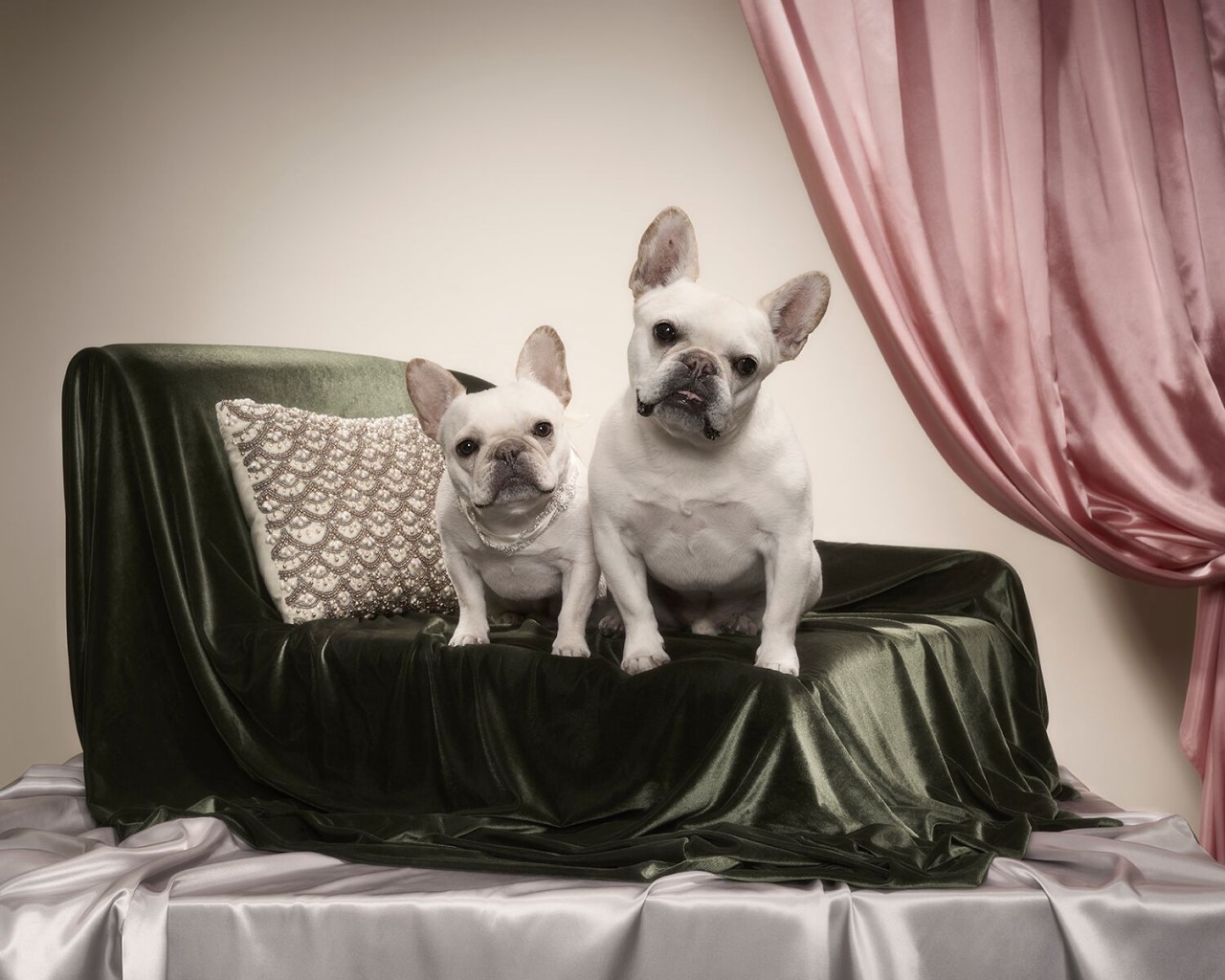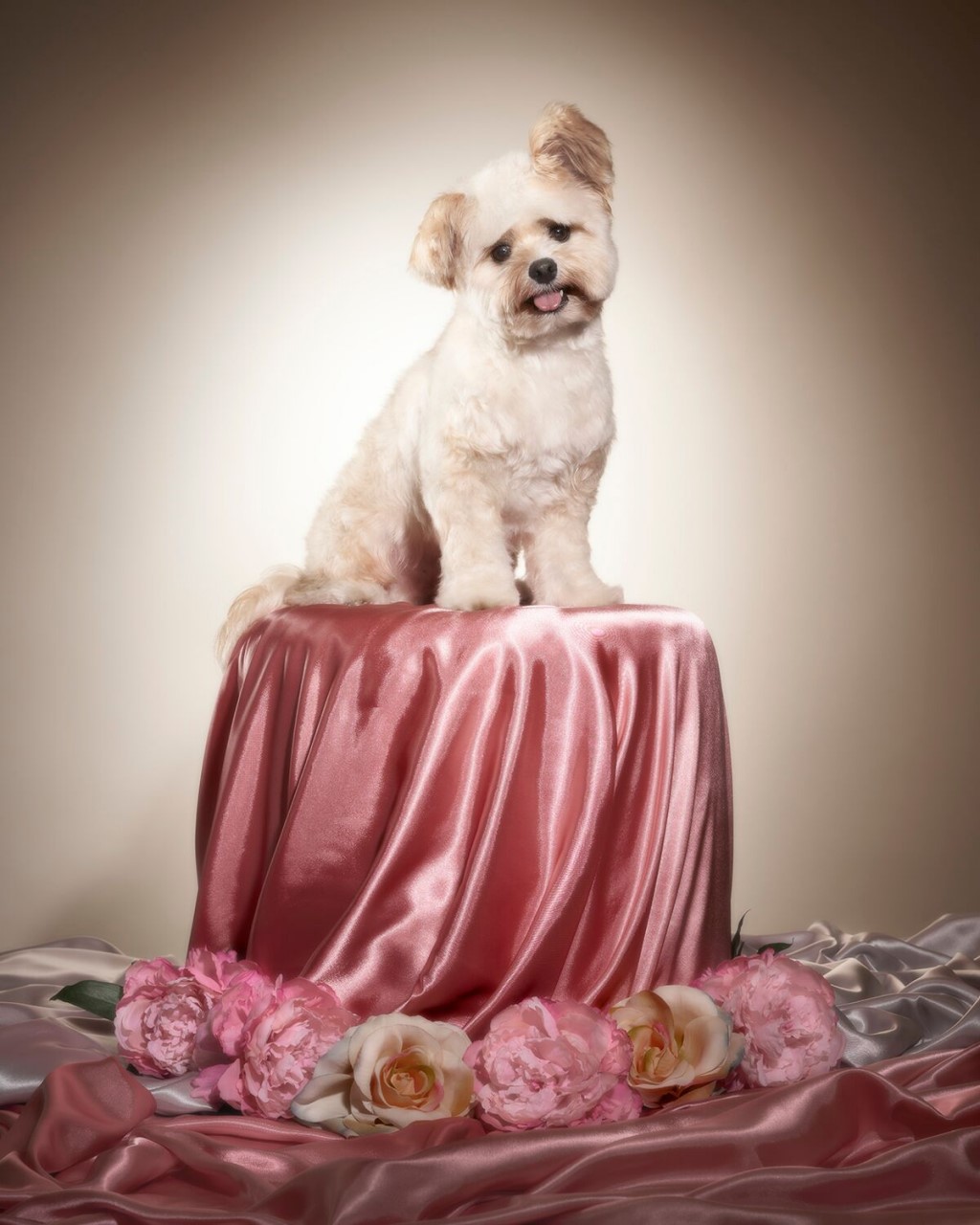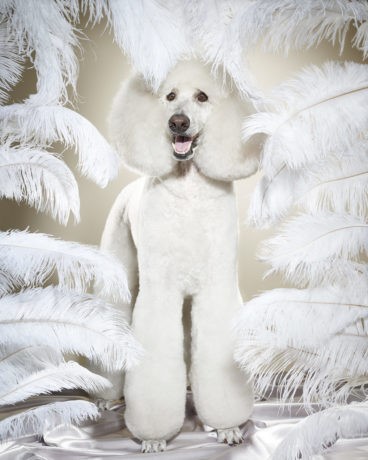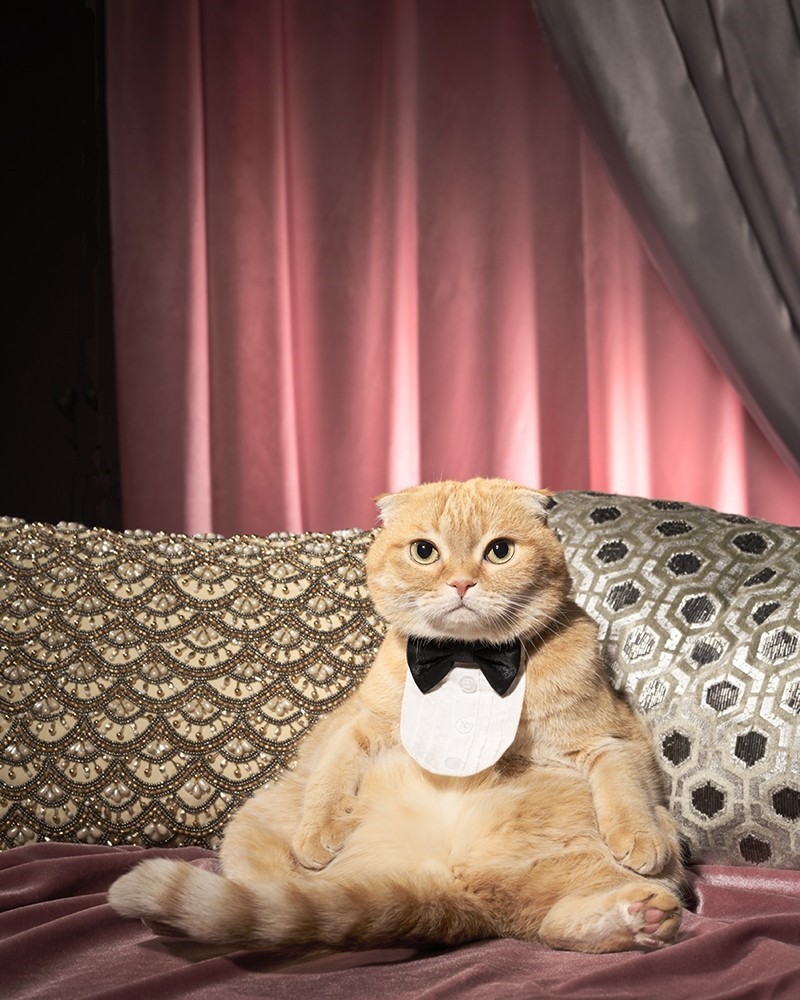Animal photography has grown substantially in popularity in recent years with the rise of social media and the subsuming of pets into twenty first century’s influencer/celebrity culture. Though there is an abundance of depictions of animals in art history, within the past several decades, the concept of the “pet” as subject has become a cultural phenomenon that requires new critical considerations.
Hollywood Furever by Naomi Harris is part of the Contact Photography Festival showing at Stackt Market. Within this exhibition and programming series, Harris has appropriated the stylistic techniques of famous classical Hollywood photographer George Hurrell and applied them to our domesticated animal friends in order to capture them as celebrities.
Naomi Harris, Weston and Fira, 2018
The exhibition features large scale vinyl installations on the walls, a series of pet portraits. The photos are characterized by soft focus, warm lighting, a vignette border and glamourous, thespian decor. The models for these portraits are the famous pets that the artist followed on social media, such as Popeye the Foodie Dog (366K followers), Weston and Fira the French Bulldogs (135K followers) and Shrampton the Scottish Fold Cat (52.1K followers). The images attempt to illustrate their distinguished status through the traditional photography style suited for Hollywood stars in the 1930s.
Naomi Harris, Popeye, 2018
A dominant aspect of this exhibition is the affiliated programming of Harris’ portrait studio for local dogs. Several days throughout the show, dog owners were able to sign up for a free photography session for their pets. The process was easy and Harris and her assistant worked well with the animals to coerce the pets into modelling for the camera.
Through the history of pets within the modelling and fashion world, the animals have traditionally been used as an accessory to their human counterparts. Walter Benjamin in The Arcade Project references the flaneur and the spectacle, as well as how exotic or lavish animals, such as turtles or particular breeds of dogs, were a way to co-opt the gaze of viewers within an urban landscape, while simultaneously expressing detachment and alienation from the modern city.
This concept has evolved in the last century to recently, according to theorist Heidi J. Nast, to pathologize people without animal companions, or who express anything less than enthusiasm and love for pets, particularly dogs. This can be reflected in the contemporary concept of emotional support animals, who fulfill people with a need for attachment in a world that is riddled with alienation. The blank canvas of a dependent animal allows us to project or anthropomorphize these creatures to suit our own internal needs, such as purpose, love and companionship.
Naomi Harris, Bo, 2018
The anthropomorphizing of animals is also a historically significant theme in art history. The evolution from gods and monsters to tools and friends has taken many different forms over time. Currently we seem to have begun a shift from animals as subject towards an animal-oriented focus where the pet is seen as ethically superior to man and in some cases a form of identity for some subcultures.
Another significant concept within Harris’ work is the fact that these animals were discovered and connections were made through social media. For the vast majority of these pets’ followers these animals are mediated entirely through technology. This cybernetic gaze on animals has become as dominant as the routine of vicariously living through the rich and famous, but offers us a reprieve from the sullied drama that pervades celebrity culture. This voyeurism towards animals is a way to achieve some of the joy of having a pet without the responsibility, financial costs, time or physical space needed to take care of them.
The fact that the most famous pets on social media are typically the clearest examples of artificial selection in breeding practices, such as French Bulldogs and Scottish Fold cats, is not insignificant. These animals were bred for their mutations and now their unnatural characteristics grant them significant agency over how we view them. We sublimate our pathos or ‘cute aggression’, emphasizing how we have rendered these creatures incapable of survival without us and thus maximizing how much they need us.
Naomi Harris, Shrampton, 2018
Harris’ work is a reflection of sociocultural trends. Retrieving the elevated status of the classical Hollywood actors and applying them to pets reveals how the modern person has begun to view our companion species. Beyond the complicated philosophical underpinnings, the works in Hollywood Furever are funny, campy and beautiful. As animal lovers, we rejoice in seeing our pets having a chance to play dress-up and look their best!
Nathan Flint
Images are courtesy of the artist and Contact Photography Festival
*Exhibition information: May 12 – 26, 2019, Stackt Market, 28 Bathurst St, Toronto. Hours: Mon–Sat 11 am – 7 pm, Sun 11 am – 6 pm.
Part of Scotiabank Contact Photography Festival




